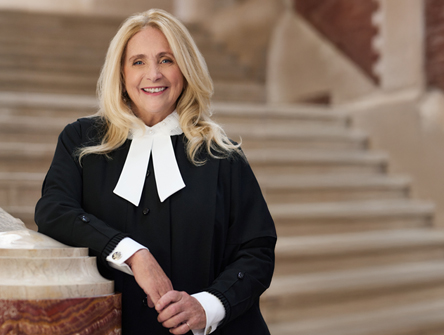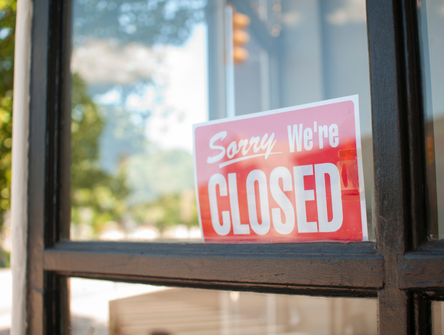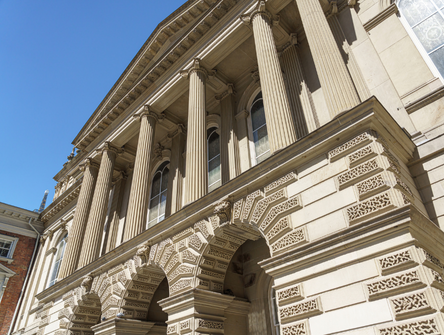Terrorism's motive
Racial profiling under the Anti-Terrorism Act's motive clause could signal trouble ahead for Crown prosecutors.

After a string of successful prosecutions under its anti-terrorism laws, Crown prosecutors suffered their first real defeat last week with the acquittal of Khurram Syed Sher, a London, Ontario doctor, accused of conspiring to facilitate terror. The ruling may signal trouble ahead for the slew of incoming terrorism-related cases.
Until last week’s acquittal, the Crown had a short but perfect track record in the handful of cases it had tried under the wide-ranging laws, which first came into effect in 2001 under the Chrétien government. It took nearly a decade to produce a first conviction under the act and it is still unclear exactly how these cases proceed are supposed to proceed.
Complicating matters is the growth in the number of anti-terrorism charges brought against suspects – a trend that is expected to continue as prosecutors struggle with the prospect of Canadians citizens heading to the newly formed Islamic State to lend their support to the self- declared caliphate.
The provisions of the original Anti-Terrorism Act expired in March 2007 when the minority Conservative government failed to get Parliament’s consent to extend the sunset clauses. Last year, the current majority government successfully reinstated many of the provisions, including powers for police to preventatively detain terrorism suspects and hold special investigative hearings without ever laying charges.
The courts have upheld the constitutionality of the laws and the secretive court proceedings time and time again. But these remain extraordinary powers intended to be used sparingly.
Among the high-profile cases was the arrest of 18 suspected terrorists in Toronto, accused of formulating a bomb plot to attack various landmarks in Toronto and Ottawa, including Parliament. Over three years of proceedings, several of the ringleaders confessed in the face of substantial evidence. Even in that case, the Crown only got convictions for 11 of the men. Charges against the others were either dropped or stayed.
The seven charges that the Crown dropped illustrate how easy it is to bring the charges forward, yet how hard they can be to prove.
“They cast a very, very wide net,” says Nadir Sachak, who represented one of the youths accused in the plot. Prosecutors eventually stayed charges against Sachak’s client and the client of his co-counsel, Raymond Motee. Both signed peace bonds restricting their activity for one year.
The Toronto defence lawyer says his client was swept up in an investigation largely on suspicion under that motivation clause. “He happens to be Muslim, he happens to hang out with the wrong group, he happens to express a view that is anti-Western,” says Sachak.
Under the Anti-Terrorism Act, in order to win a conviction, it isn’t enough for the Crown to prove the intent to commit an act of terrorism, or to aid and abet a terrorist organization. It must also prove the so-called ‘motive clause’, which stipulates that the accused must have acted “for a political, religious or ideological purpose, objective or cause.”
But prosecutors can be inclined to give broad interpretation to the clause. Sachak says that the prosecution alleged that his client’s theft of supplies from a Canadian Tire was acting for the purposes of terrorism, because of his political and religious beliefs. In the end, there was scarce proof that the two youths were involved in the plans being coordinated by the ringleaders, say their lawyers.
Sachak raises other concerns with possible application of the law. What if an individual is speaking to a group of youth, extolling the virtues of the Islamic State, and a few of them end up travelling to Syria and fighting for the terrorist group? At what point in supporting Hamas, the elected government of Gaza as well as a terrorist organization, does it become a crime?
“What you could very well have is a loudmouth exposing these views,” says Sachak. “What you’re going to have is a lot more people getting caught up in these charges.”
Lawrence Greenspon was defence counsel for Momin Khawaja, who was convicted and sentenced in 2010 to life imprisonment, for his involvement in a U.K.-based bomb plot.
While Khawaja was found guilty of having financed the plot and working to design a bomb detonator, he appeared to have no plans to participate in the attack itself.
The trial judge had set aside the motivation clause, calling it unconstitutional. But both the Court of Appeal and the Supreme Court of Canada disagreed, and found his commitment to violent jihad to be both obvious and relevant to the charge.
That the trial judge had nonetheless convicted Khawaja, without the motivation clause, raises an interesting question about whether the provision is truly necessary. “I think that the inclusion of the motivation clause…was a very blatant introduction into the area of thought,” says Greenspon – or thoughtcrime.
While Khawaja may be a prime example of how profiling supposed radicals can actually allow investigators leeway to find legitimate security risks, it also illustrates how guilt by association is a byproduct of the motive clause. “In having that motivation clause in the definition of terrorism has really given a license to authorities to investigative mostly Muslim males in-between the ages of 20 and 50,” says Greenspon.
Consider the case of Khurram Sher. Found not guilty last week of conspiring to facilitate terror, Sher had been accused alongside two other men who are still facing trial for allegedly running a terror cell within Canada.
The case against Sher hinged largely on his extremist views. By attending meetings with the other two men, who allegedly formulated a bomb plot, the Crown alleged Sher knowingly organized with the group for the purposes of committing terrorist acts. The acquittal sends a strong message, says Greenspon. “It’s one that says, ‘look, this is Canada and we don’t convict people for their thoughts’”.
In all of those cases, the prosecution heavily relied on wiretaps, confidential informants, and undercover officers in order to establish their cases. And, thanks to Section 38 of the Canada Evidence Act, which can be invoked to support an objection to disclosure, the evidence was often kept from the defence.
When Motee and his co-counsels applied to see evidence collected by CSIS for the Toronto 18 case, they spent a month reviewing evidence and fighting to have it un-redacted.
“In a lot of ways, it’s very similar to a guns and gangs case. You’re looking at an organization that is criminalized. So a lot of principles, like when dealing with wiretap evidence, are the same,” says Motee. “Where it gets a little tricky is in terms of the involvement of CSIS, for example.”
Indeed, the courts have treated in these investigations as a third party. As such, any evidence that they present is not automatically disclosed to the defence. Even mentions of CSIS in reports from other agencies can be redacted.
The RCMP, too, has been known to slap redactions on evidence. It’s hard to know what wasn’t disclosed,” says Motee. “What it really takes is a trial judge to say that, ‘yes, this is unfair if the accused can’t see the evidence against them,’” says Sachak.
While the judges of the Federal Court have crafted that disclosure regime into something a little more open, often rebuking over-zealous redactions from law enforcement, suspects can still be convicted without seeing all of the evidence before them.
Similarly, Canada’s security certificate system regime initially allowed the Minister of Public Safety to target any non-citizen in Canada believed to pose a threat, subject to some review by the Federal Court, and have them barred from the country.
The Supreme Court, in a rare rebuke to Ottawa’s anti-terrorism laws, declared the process unconstitutional in 2007. An updated system introduced by the Conservative Government addressed some of the court’s concerns. It afforded the accused a “special advocate,” chosen by the government, to review the evidence against them. The changes stood up to Charter scrutiny when they came back before the court.
Lorne Waldman, who has been a special advocate in these certificate cases, says that things are getting better.
“I think that it is fair to say we have made considerable progress since the anti-terrorism legislation was introduced,” he says, adding the trend is towards “more disclosure, more communication, better tools for special advocates — all to try to address the current imbalance in the system.”
The ad hoc changes to both the security certificate and anti-terrorism system have made it pretty clear that the Federal Courts, facing a low volume of terrorism-related charges, have been tinkering on the fly.
That’s not necessarily a bad thing, says Motee, who notes that the Federal Court is the best placed to be creating the parameters of what should and should not remain secret.
“In a lot of ways, what we have with it being in the Federal Court is actually quite good,” he says.
That may soon have to change, as an influx of new cases come in. “It’s still very early in the process,” says Greenspon, noting that there have been less than a dozen terrorism-related cases settled thus far.
According to Statistics Canada, there were 186 terrorism-related charges laid between 2012 and 2013. With groups like IS trying to recruit from around the world, including Canada, that figure could rise.
Since the 2013 update to the 2001 act, it’s a crime for anyone to travel abroad for the purpose of terrorism. After missing several high-profile cases, like Calgarian Farah Mohamed Shirdon or Nova Scotia-born Damian Clairmont who were both killed in Syria, Ottawa is ratcheting up efforts to stop would-be fighters before they reach the frontlines.
That means the courts will likely have to develop a more consistent method in applying the Section 38 restrictions.
But it is worth noting that in spite of all the press regarding strained relations between the Supreme Court and the federal government, the justices have been remarkably deferential to Ottawa enforcement of its anti-terror laws.
“If you look at the way that the Supreme Court of Canada dealt with most of the legislative initiatives of the Harper Government of the last five or six years, it’s a very stark contrast to the way that they've dealt with the anti-terrorism legislation,” says Greenspon.
Waldman, for his part, says Canada is merely reflecting an international trend on the matter. “The Court has tried to find a balance between national security and human rights, and it's decisions parallel those in U.K. and European Court for Human Rights,” he says.


